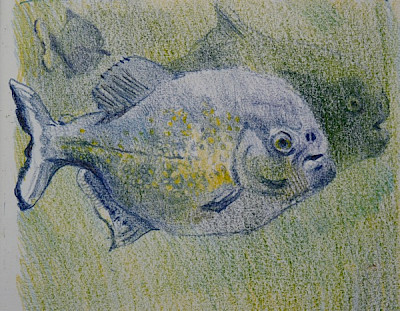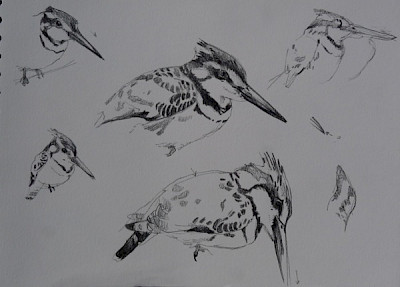Sketching Animals
Through the spotting scope animals are brought up close for inspection . The tube lense narrows the world down to a few square metres to the exclusion of all else. Optics enhance the light and lend scenes a flattened, almost painterly effect. It’s close to how the eye sees, but not quite. I prefer getting close to an animal, if possible observing without optical aids. But in going in close there’s always the danger of disturbing widlife; the golden rule is: do not disturb!
Drawing in the field, the brush guided by the questing eye & groping mind, is the basis for all my work. Life drawing is the most direct way of investigating the mysteries of life outside our own. It means attempting to grasp movement, character and liveliness in one go. There’s joy there, in trying to understand what I'm observing, in learning something I did not know before
The difficulties and frustration of drawing animals sur le vif weigh up against the drawbacks; even with failure staring me in the face, there’s that taste of satisfaction —in having tried.
Usually only a fraction of fieldsketches is of lasting value. So why spend so much time searching, filling page after page? I believe that every line serves a purpose, that not a minute is wasted. By sketching I’m filling "blank spots" in my mind with valuable information, both anatomical and pictorial. Seen thus, a sketchbook becomes an archive of ideas and, perhaps more importantly, sketches are both key and map to the labyrinth we call memory. Leafing through my sketchbooks evokes events, sounds and sometimes the smells, making more vivid the memory. This is a very powerful source that helps me to develop subsequent work in the studio.




































